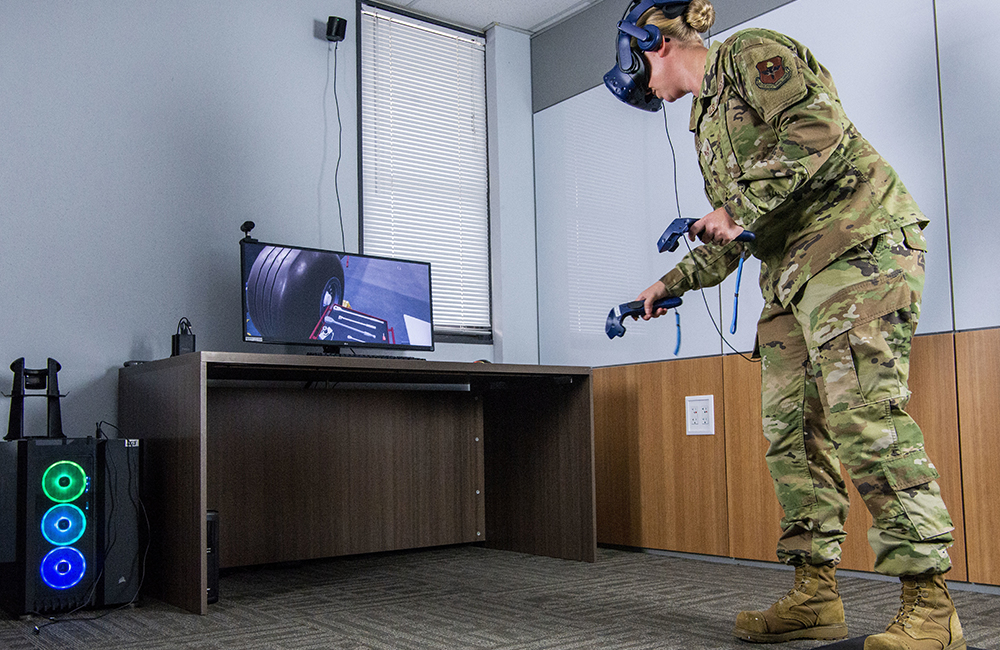DOD CDAO Defines AI Goals For Warfighter Support
The Defense Department’s newest office outlines its mission for assuring and transforming AI.

The Defense Department’s Chief Digital and Artificial Intelligence Office, which reached full operating capability as of June 1, plans to build out an AI assurance test case to show how AI-enabled systems can support the warfighter mission.
According to Jane Pinelis, chief of the AI Assurance Directorate at CDAO, the goal of AI assurance is to provide the arguments and evidence that DOD AI-enabled systems can meet warfighter requirements and perform adequately in an operational environment according to the necessary technical, effectiveness, suitability and survivability requirements.
“The systems also conform to our responsible AI principles. We know that no system will ever be perfect, but it’s critical that any technology that we provide to our warfighters is an asset and not a liability,” Pinelis said during the 2022 DOD Digital & AI Symposium Tuesday.
Over the years, tests and evaluations have built a body of evidence to assure DOD that AI technologies are trustworthy. But AI continues to introduce new challenges.
Diane Staheli, chief of responsible AI at CDAO, believes a good way to ensure deploying responsible AI across DOD is by defining and streamlining the AI development pipeline.
“How do they integrate and how does someone take something from concept to solution through this pipeline and apply each one of those point solutions on the way and figuring that out and making it easy?” Staheli asked.
Alka Patel, former chief of responsible AI at the Joint Artificial Intelligence Center (JAIC), which was absorbed by the CDAO, said: “I think there needs to be points in that pipeline to have conversations around the socio-technical aspects of these applications and capabilities. I also think that the other piece of this is that at DOD, privacy and safety need to be elevated in these conversations. Both of those are critical pieces to assuring the responsible employment of AI.”
The CDAO also aims to further drive AI transformation. Former DOD Chief Data Officer David Spirk said leadership prioritization and IT modernization are very important to this process.
“Understanding where you are at echelon at DOD is key,” he said during the symposium Tuesday. “Pilots and prototypes are everything, live in the formation not in a lab but in your live data workflows that are testable and repeatable. If you can do that, and when you do that, you accelerate very fast and you leave the imagination into the warfighters, operators and domain experts not the data scientists and AI professionals who think they know what they need.”
Dr. Aleksander Madry, professor of cadence design systems computing at Massachusetts Institute of Technology (MIT), said leadership prioritization is key to successful AI adoption.
“Leadership needs to explain to everyone what they are doing, which steps should or should not be taken. Also realizing you need to engage and there will be mistakes,” he said during the symposium Tuesday.
This is a carousel with manually rotating slides. Use Next and Previous buttons to navigate or jump to a slide with the slide dots
-

How Agencies are Upskilling the Workforce in AI
Federal officials are putting in place new training and education methods to ensure its overall workforce understands the technology.
3m read -

Building Better Data Governance Across FDA
The agency is using emerging technology to tackle its data challenges.
19m listen -

Strategies for Effective Data Modernization
Data is the lifeblood of critical decisions and streamlines operations across the government, but many agencies struggle with inconsistent standards.
33m watch -

CDC Updates Public Health Data Strategy
Accelerating data sharing through capabilities like electronic case reporting make up a large portion of the new two-year plan.
3m read




